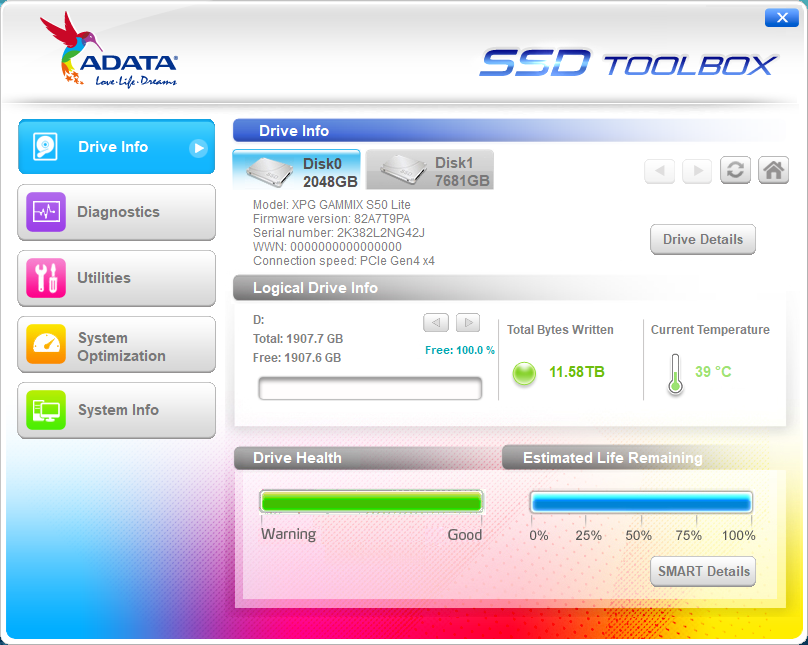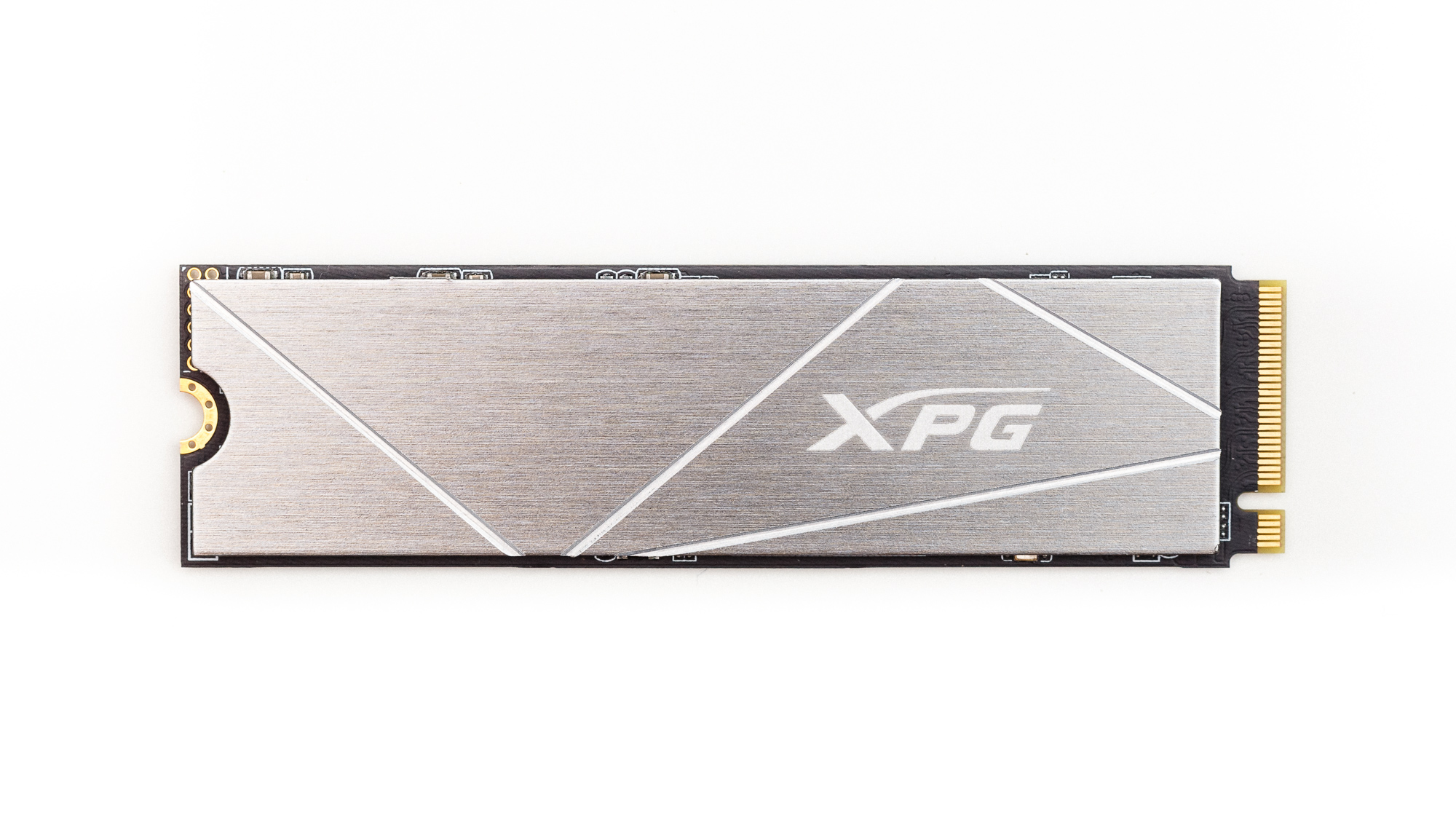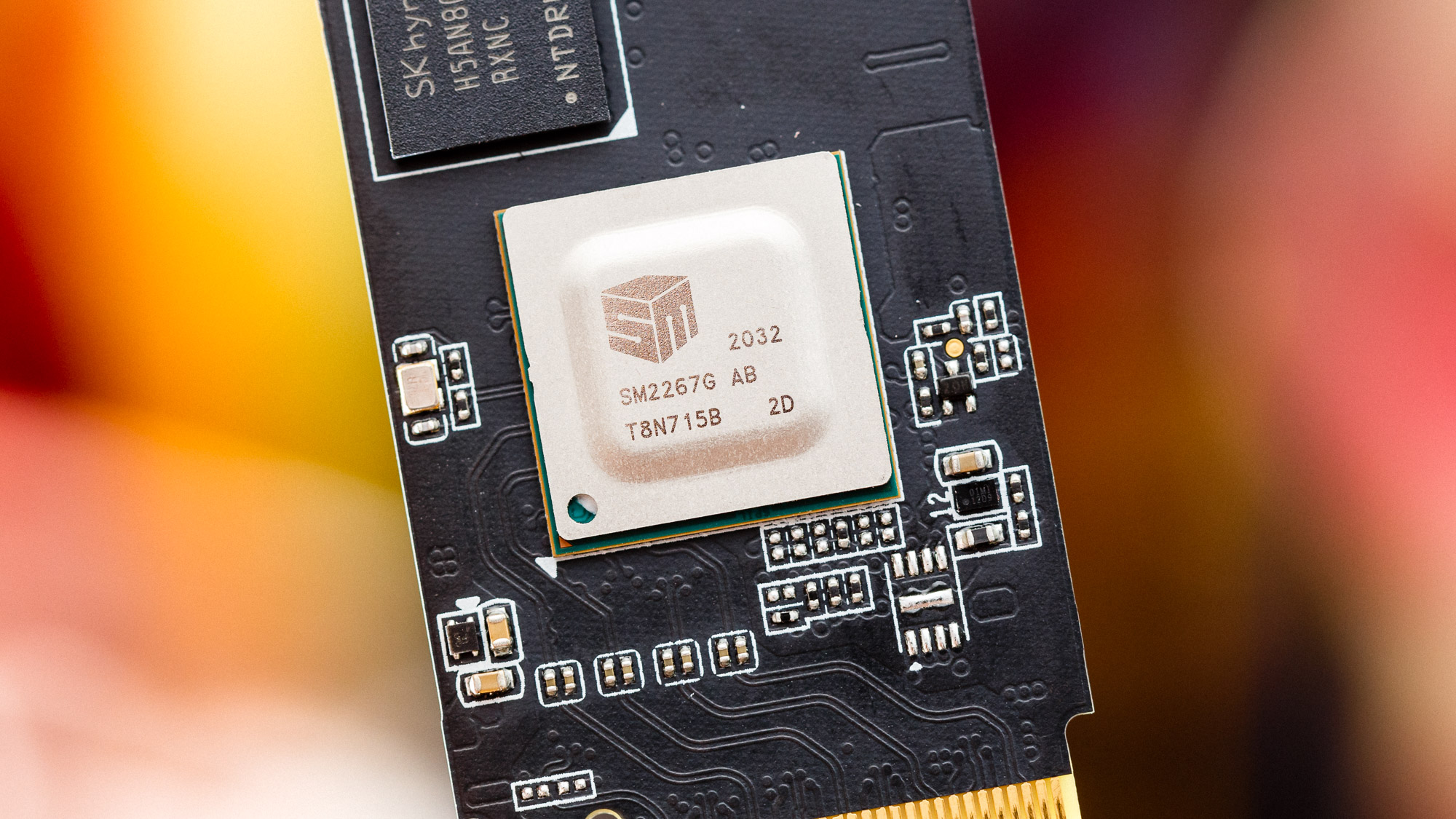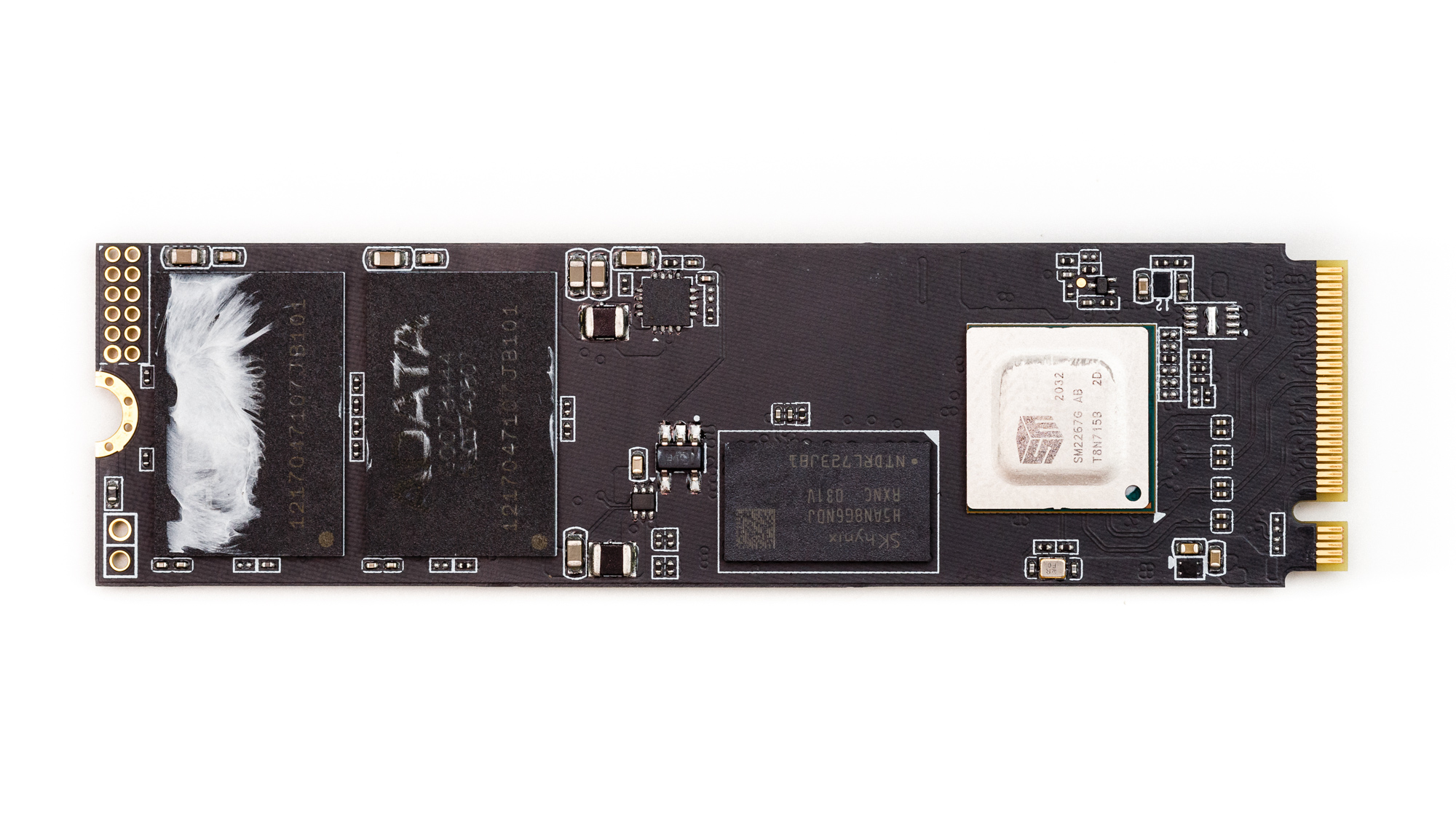Tom's Hardware Verdict
Adata’s XPG Gammix S50 Lite puts up a tough fight against many of the most powerful SSDs on the market, especially when it comes to loading your favorite games. Overall, the drive is quite affordable given its specifications and capabilities.
Pros
- +
Competitive performance
- +
Attractive design
- +
Affordable prices
- +
Large dynamic write cache
- +
AES 256-bit full-disk encryption
- +
5-year warranty
Cons
- -
Slow writes outside of the cache
Why you can trust Tom's Hardware
Adata’s XPG Gammix S50 Lite is a mainstream M.2 NVMe SSD that serves up intro-level PCIe 4.0 performance for those looking for a taste of what the standard has to offer but don’t want to splurge on more expensive SSDs. If you’re on the hunt for an affordable PCIe 4.0 SSD with a new controller, the Adata XPG Gammix S50 Lite is a top pick.
Most expensive high-end SSDs come with powerful and power-hungry eight-channel NVM SSDs controllers, although that is beginning to change. With the introduction of the SK hynix Gold P31, we witnessed Samsung 970 EVO Plus-level performance out of an NVMe controller and flash that operates on just half the channels to boost efficiency and reduce cost. But, SK hynix isn’t the only one out there looking to optimize for a mix of both performance and value.
Adata and Silicon Motion have been working tirelessly on the XPG Gammix S50 Lite. The SSD is powered by Silicon Motion’s newest four-channel SM2267 NVMe 1.4 SSD controller, DDR4 DRAM, and Micron’s latest TLC flash operating at very responsive speeds. This trio of hardware, along with all the other supporting components, allows Adata’s XPG Gammix S50 Lite to push beyond PCIe 3.0 x4 performance limits while maintaining affordable pricing.
Specifications
| Product | Gammix S50 Lite 1TB | Gammix S50 Lite 2TB |
|---|---|---|
| Pricing | $149.99 | $299.99 |
| Capacity (User / Raw) | 1024GB / 1024GB | 2048GB / 2048GB |
| Form Factor | M.2 2280 | M.2 2280 |
| Interface / Protocol | PCIe 4.0 x4 / NVMe 1.4 | PCIe 4.0 x4 / NVMe 1.4 |
| Controller | Silicon Motion SM2267EN | Silicon Motion SM2267EN |
| DRAM | DDR4 | DDR4 |
| Memory | Micron 96L TLC | Micron 96L TLC |
| Sequential Read | 3,900 MBps | 3,900 MBps |
| Sequential Write | 3,200 MBps | 3,200 MBps |
| Random Read | 380,000 IOPS | 540,000 IOPS |
| Random Write | 490,000 IOPS | 540,000 IOPS |
| Security | AES 256-bit encryption | AES 256-bit encryption |
| Endurance (TBW) | 740 TB | 1,480 TB |
| Part Number | AGAMMIXS50L-1T | AGAMMIXS50L-2T |
| Warranty | 5-Years | 5-Years |
Adata’s XPG Gammix S50 Lite is priced very competitively against most of the best PCIe Gen3 SSDs. The drives come in capacities of 1TB and 2TB and at $150 and $300, respectively, and the company specs respectable endurance levels. The company covers the 1TB model for up to 740 TB of writes within its five-year warranty, while the 2TB is covered for up to 1,480TB thanks to Silicon Motion’s sixth-generation NANDXtend ECC LDPC (with 2KB code-word).
Adata’s XPG Gammix S50 Lite is not quite as fast as some of the other PCIe Gen4 NVMe SSDs on the market, such as Sabrent’s Rocket NVMe 4.0 or Samsung’s 980 PRO, but based on its specs, it appears similar if not a bit better than most PCIe Gen3 SSDs. Adata rates the Gammix S50 Lite to sustain upwards of 540,000/540,000 random read/write IOPS and dishes out op to 3.9/3.2 GBps of sequential read/write throughput. The Gammix S50 Lite supports a large dynamic SLC cache to absorb inbound write requests, but write performance will degrade quite a bit when the cache fills.
The Gammix S50 Lite supports Trim, secure erase, and S.M.A.R.T. data reporting. It also offers data security with not only SRAM ECC, a built-in RAID engine, and End-to-End (E2E) Data Protection, but also TCG OPAL-compliant AES 256-bit full disk encryption. So, not only does it offer potential buyers the speed and reliability they want, but also optional hardware-accelerated security support when needed.
Software and Accessories


Adata supports the Gammix S50 Lite with an SSD Toolbox and Acronis True Image HD cloning software. The SSD Toolbox allows you to monitor the SSD, run diagnostic tests, and more. The company’s website also lists a new firmware update that helps improve performance (as used in today’s testing).
Get Tom's Hardware's best news and in-depth reviews, straight to your inbox.
A Closer Look


Adata’s XPG Gammix S50 Lite comes in an M.2 2280 double-sided form factor and features a black PCB, just as any modern SSD should. It even comes with a well-crafted aluminum heatsink that stands out with its rigid geometric cut lines and brushed finish. The company claims the heatsink helps reduce temperatures by up to 20%.


Silicon Motion’s SM2267 PCIe 4.0 x4 NVMe 1.4 SSD controller powers the Adata XPG Gammix S50 Lite. This is the first time we’ve seen an SSD built with this new controller, but we learned a few details about it. The package measures 12 x 12 mm and has a 28nm Arm Cortex R5 CPU architecture with two cores like its predecessor, the SM2263. It also features a DRAM cache and has a single SK hynix 8Gb (1GB) DDR4 DRAM IC on our 2TB sample.
As mentioned earlier, the controller has four channels to interface with the flash and supports up to eight chip enables per channel. Thus, it doesn’t need as much die space, nor does it consume as much power as hotter-running eight-channel designs. However, its potential performance is roughly half that of more powerful controllers because of the reduced channel count. The controller uses and supports Active State Power Management (ASPM), Autonomous Power State Transition (APST), and the L1.2 ultra-low power mode for better efficiency, too.



There are thirty-two of Micron’s B27B 96L TLC flash dies packed into the four NAND packages on our 2TB sample. Each die has a density of 512Gb, and due to geometry optimizations over B27A, the flash operates at NV-DDR4 speeds up to 1,200 MTps – similar to the speed of the flash on SK hynix’s Gold P31.
Also, like the flash on the SK hynix, the Micron 96L TLC has similar design concepts. Micron’s 96L TLC leverages a four-plane design that enables four independent sections of NAND access per die. Also, Micron places the periphery circuitry underneath the NAND cell arrays for better die efficiency (CUA). To hit 96 layers, Micron uses a tile-based design structure that enables the company to scale its floating gate cell technology. Not only does the tile system allow for circuitry redundancies, but it also enables responsive random access and helps to lower power consumption during partial page reads.

Sean is a Contributing Editor at Tom’s Hardware US, covering storage hardware.
-
tennis2 Half the channels and 96L TLC compared to the SX8200 Pro while delivering essentially identical performance AND power characteristics? Disappointing. Hopefully this is just a matter of firmware tuning needed.Reply -
deesider Surely the S50 Lite is just deliberately hamstrung to bring perceived value to the later 'Pro' version. Otherwise just pointless compared to the SX8200 ProReply -
Co BIY This article deserves an update after the bait-and-switch games Adata was found to be playing with the SX8200 Pro. How can the consumer be sure that they are getting the same hardware that Tom's has tested.Reply
https://www.tomshardware.com/news/adata-xpg-sx8200-pro-controller-change -
car2000 I am thinking of buying this drive, based on the strong review.Reply
I am concerned by this review- https://www.storagereview.com/review/xpg-gammix-s50-lite-pcie-4-0-ssd-review
How can they come to such different conclusions on the merits of this unit? -
deesider Reply
It seems Storagereview gave it a poor review because it is the slowest of the PCIe4 drives, while Tom's gave it a good review because it is the cheapest of the PCIe4 drivescar2000 said:I am thinking of buying this drive, based on the strong review.
I am concerned by this review- https://www.storagereview.com/review/xpg-gammix-s50-lite-pcie-4-0-ssd-review
How can they come to such different conclusions on the merits of this unit? -
car2000 I know what you mean, but the Storage Review article says that this drive is slow even in comparison with PCIe3 drives.Reply
I am wondering if it is because the Tom's review was for the 2 GB version, whereas the Storage Review Article is for the 1 GB version, and the 1 GB version of the drive is slower? It does appear to have a lower specification in some areas. -
deesider Maybe it also relates to their testing methodology. Storage review say that they completely fill the drive then partition 5% to test on. Perhaps that has an unexpected effect?Reply -
javiindo It looks like all brands have some controllers to choose from and you will never know which one they are using. tha'ts why they never say the exact controller they are using. Just general speed performance. They don't want to be attached to any supplier/brand.Reply